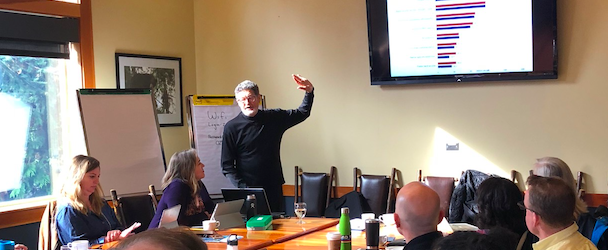"We live in a connected world, and our response to data should reflect that connectivity."
Sign in to KYOB+
Never miss the latest read on industry data and analysis.
 Jim Hekkers has served in several executive leadership roles and on boards of directors within cultural organizations, so he knows more than a thing or two about leading and managing change! Notably, Jim served as the Managing Director of the Monterey Bay Aquarium for 15 years, and I am pleased to work with him today at IMPACTS. Jim has authored this last article in our series on the four steps to becoming a data-informed cultural organization. We've...
Jim Hekkers has served in several executive leadership roles and on boards of directors within cultural organizations, so he knows more than a thing or two about leading and managing change! Notably, Jim served as the Managing Director of the Monterey Bay Aquarium for 15 years, and I am pleased to work with him today at IMPACTS. Jim has authored this last article in our series on the four steps to becoming a data-informed cultural organization. We've...


